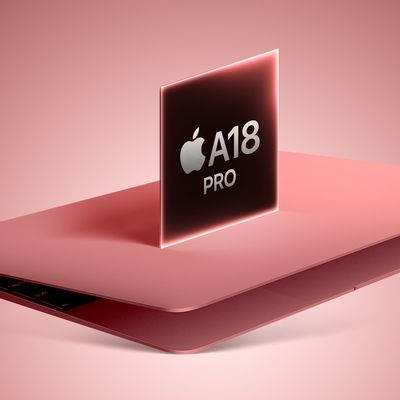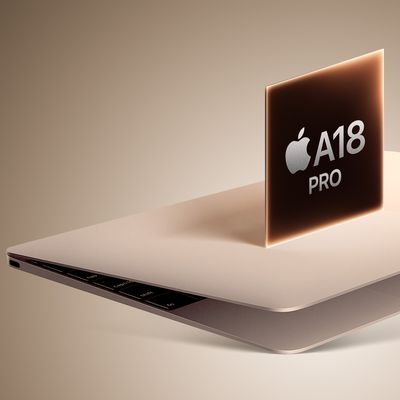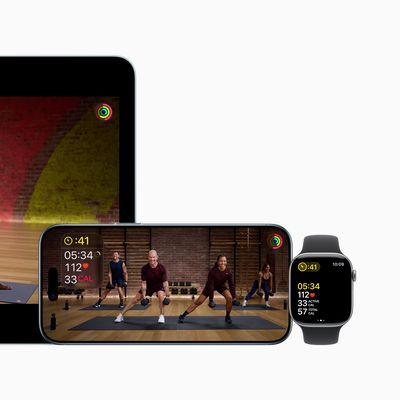2015 MacBook Air Can Drive 4K Displays at 60Hz
The recently refreshed 2015 MacBook Air can drive 4K external displays at a refresh rate of 60Hz, as confirmed by Ars Technica. The report claims that Intel's new Broadwell processors with integrated Intel HD Graphics 6000 support 4K output at 60Hz using a DisplayPort 1.2 cable, whereas previous-generation notebooks with Haswell processors were limited to lower resolutions at 30Hz.

Apple's tech specs page for the new MacBook Air lists the notebook as capable of supporting one external display at up to 2,560×1,600 pixels, which clearly is not the case. Apple may be electing not to advertise 4K support for the new MacBook Air on purpose, however, as performance can still be somewhat laggy or jerky and the company has a shortlist of supported displays and configurations.
"Given that the Air is using one of Intel’s integrated GPUs, general OS X user interface performance isn’t too bad while driving the Air’s internal display alongside the 4K display. Dropped frames are clearly visible when entering into Full Screen mode or using Mission Control, and of course you’ll never want to try playing games or doing heavy 3D work at native resolution. But things are more than smooth enough for desktop use."
The new Thunderbolt 2 port included on the refreshed MacBook Air and MacBook Pro is compatible with the DisplayPort 1.2 spec, meaning that Single-Stream Transport is possible using one cable. Meanwhile, 4K over HDMI remains restricted to a 24Hz refresh rate due to the limitations of the current 1.4 spec. Multi-Stream Transport should also be possible using DisplayPort 1.2, although the number of displays will be limited and performance will likely be impacted.
Update: Apple has now updated its tech specs page for the new MacBook Air to note that it supports external displays up to 3840 by 2160.
Popular Stories
Apple is not expected to release a standard iPhone 18 model this year, according to a growing number of reports that suggest the company is planning a significant change to its long-standing annual iPhone launch cycle.
Despite the immense success of the iPhone 17 in 2025, the iPhone 18 is not expected to arrive until the spring of 2027, leaving the iPhone 17 in the lineup as the latest...
Language learning app Duolingo has apparently been using the iPhone's Live Activity feature to display ads on the Lock Screen and the Dynamic Island, which violates Apple's design guidelines.
According to multiple reports on Reddit, the Duolingo app has been displaying an ad for a "Super offer," which is Duolingo's paid subscription option.
Apple's guidelines for Live Activity state that...
The company behind the BlackBerry-like Clicks Keyboard accessory for the iPhone today unveiled a new Android 16 smartphone called the Clicks Communicator.
The purpose-built device is designed to be used as a second phone alongside your iPhone, with the intended focus being communication over content consumption. It runs a custom Android launcher that offers a curated selection of messaging...
Apple is planning to release a low-cost MacBook in 2026, which will apparently compete with more affordable Chromebooks and Windows PCs. Apple's most affordable Mac right now is the $999 MacBook Air, and the upcoming low-cost MacBook is expected to be cheaper. Here's what we know about the low-cost MacBook so far.
Size
Rumors suggest the low-cost MacBook will have a display that's around 13 ...
Apple plans to introduce a 12.9-inch MacBook in spring 2026, according to TrendForce.
In a press release this week, the Taiwanese research firm said this MacBook will be aimed at the entry-level to mid-range market, with "competitive pricing."
TrendForce did not share any further details about this MacBook, but the information that it shared lines up with several rumors about a more...
Apple today announced a number of updates to Apple Fitness+ and activity with the Apple Watch.
The key announcements include:
New Year limited-edition award: Users can win the award by closing all three Activity Rings for seven days in a row in January.
"Quit Quitting" Strava challenge: Available in Strava throughout January, users who log 12 workouts anytime in the month will win an ...
Govee today introduced three new HomeKit-compatible lighting products, including the Govee Floor Lamp 3, the Govee Ceiling Light Ultra, and the Govee Sky Ceiling Light.
The Govee Floor Lamp 3 is the successor to the Floor Lamp 2, and it offers Matter integration with the option to connect to HomeKit. The Floor Lamp 3 offers an upgraded LuminBlend+ lighting system that can reproduce 281...
Belkin today announced a range of new charging and connectivity accessories at CES 2026, expanding its portfolio of products aimed at Apple device users.
UltraCharge Pro Power Bank 10K with Magnetic Ring
The lineup includes new Qi2 and Qi2.2 wireless chargers, magnetic power banks, a high-capacity laptop battery, and USB-C productivity accessories, with an emphasis on higher charging...
























